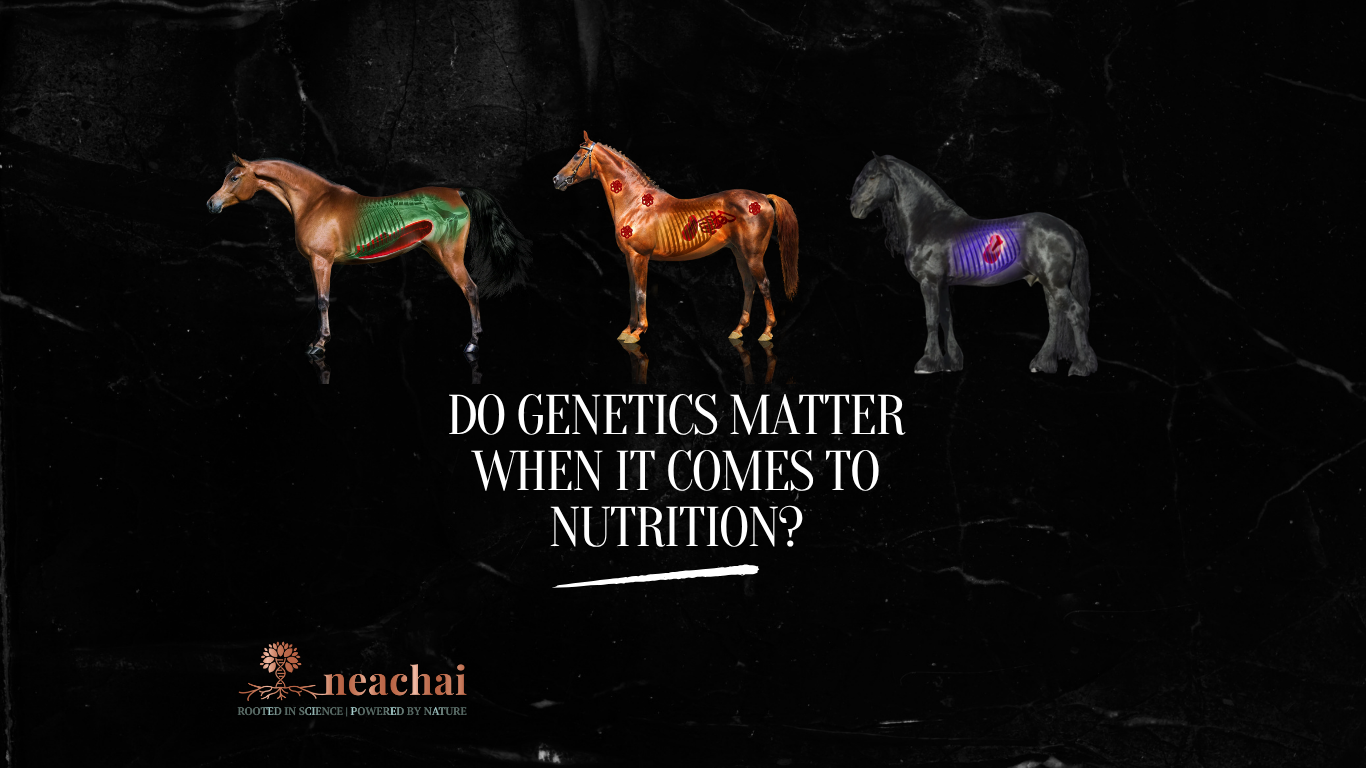It doesn’t just matter—it’s the foundation of nutrition itself.
Using food as medicine isn’t new. In Ayurveda, it’s called Ahara Chikitsa. In modern science, the closest translation is Nutrigenomics. But somewhere along the way, we reduced nutrition to numbers on a spreadsheet: protein, fat, carbs, vitamins. That breakdown is useful, but it’s only one dimension of the real picture.
Functional nutrition is much more than micronutrient content. Every substance your horse consumes has qualities: a taste (sweet, pungent, bitter, astringent, sour, salty), an action (heating or cooling), and a post-digestive effect (sweet, sour, pungent). These qualities shape how nutrients are absorbed and used, and genetics plays a central role in that process.
Take a look around your barn. How many horses are on GastroGard, sucralfate, probiotics, or other stacks of supplements? Probably close to 90%. That number alone tells us something is wrong. The digestive system is the most complex organ in the body, and yet we feed horses as if it were a simple machine: input protein, get output muscle. But bodies don’t work like that, not for horses, not for humans.
Adding more protein doesn’t guarantee muscle growth. Feeding a synthetic calcium supplement doesn’t guarantee stronger bones. That’s marketing, not science.
So, why are so many horses on endless supplements, probiotics, mineral balancers, ration balancers? Because the “complete feed” isn’t being fully digested. Instead, it’s driving inflammation and digestive stress. The result? You stack gut supplements, anti-inflammatories, vitamins, and minerals on top, hoping something will stick. But the missing piece is understanding the horse’s constitution, its genetic blueprint.
This is where Ayurgenomics comes in. It’s the science that describes functional medicine today. At its core are the five elements of nature: ether, air, fire, water, and earth. These elements exist in every living being, grouped into three constitutions (or doshas):
-
Vata (ether + air): cold, mobile, drying-catabolic
-
Pitta (fire + water): hot, sharp, transformative-metabolic
-
Kapha (earth + water): heavy, stable, building-anabolic
Each horse (and human) is born with a dominant constitution. That becomes the blueprint for their biological needs.
For example, a dominant Vata horse is prone to nervous system issues, circulatory problems, involuntary muscle movement, and degenerative conditions. Fall and early winter are the hardest seasons for them, think constipation, impaction colics, dry skin, anxiety, weight loss. They don’t need another supplement stack. They need foods with the opposite qualities: heavy, warming, sweet, unctuous
That means feeding things like cooked oats, hemp and flax oils, papaya, beet root, lemon peel, pumpkin seeds, amaranth, sprouted mung beans, and flax seeds, hay cubes and soaked in hot/warm water
Nutrition isn’t about “feed more to gain more.” It’s about asking: Why isn’t this horse absorbing and assimilating its food?
This is where the 3 R’s of Ayurvedic nutrition science come into play:
-
Rethink: Question the food sources.
-
Remove: Back off supplements and additives.
-
Replace: Choose whole foods specific to your horse’s biological needs.
Genetics is not just a detail, it’s the playbook. When you understand your horse’s constitution, you move beyond generic nutrition plans and into true functional health.

